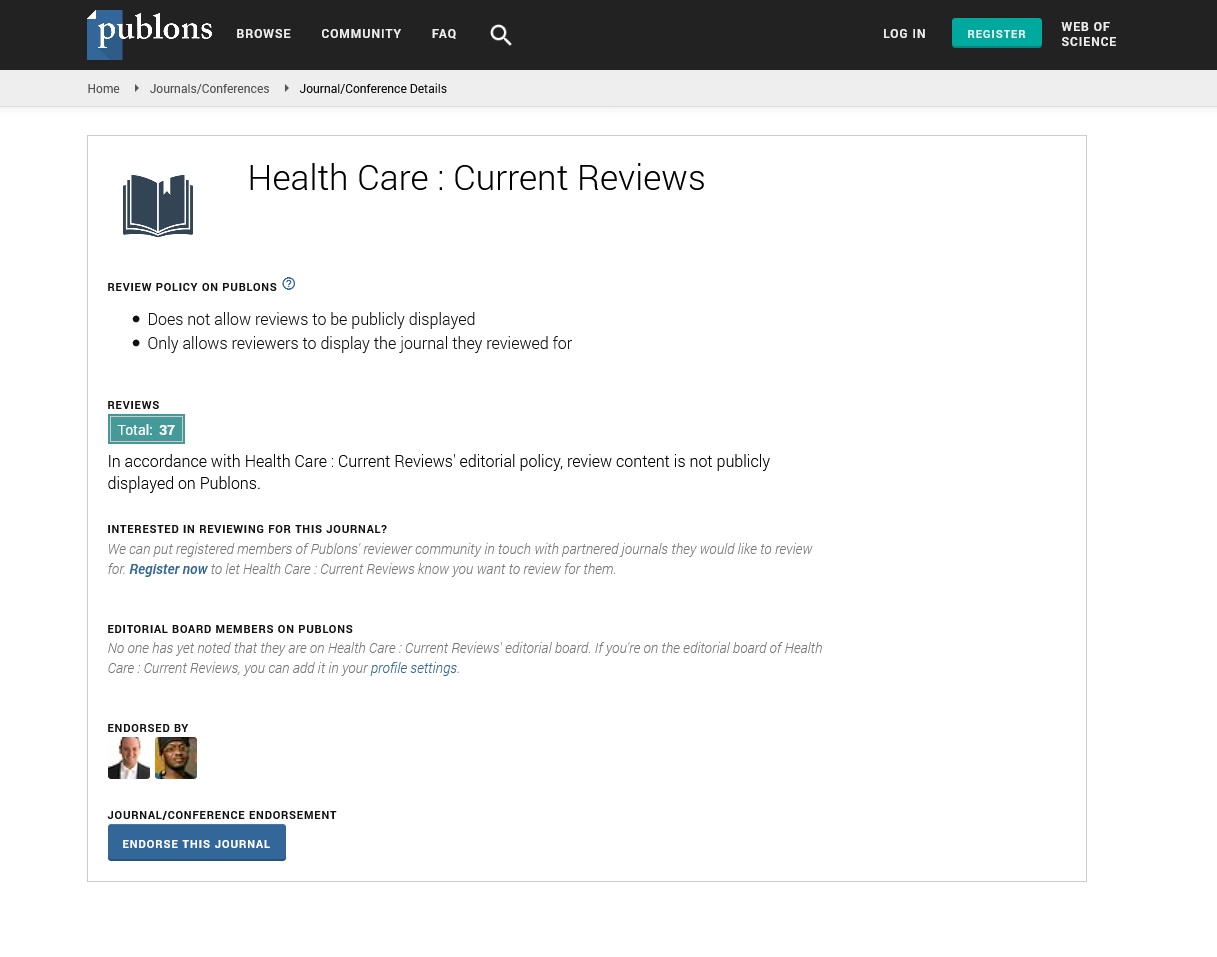Indexed In
- Open J Gate
- Academic Keys
- RefSeek
- Hamdard University
- EBSCO A-Z
- Publons
- Geneva Foundation for Medical Education and Research
- Google Scholar
Useful Links
Share This Page
Journal Flyer

Open Access Journals
- Agri and Aquaculture
- Biochemistry
- Bioinformatics & Systems Biology
- Business & Management
- Chemistry
- Clinical Sciences
- Engineering
- Food & Nutrition
- General Science
- Genetics & Molecular Biology
- Immunology & Microbiology
- Medical Sciences
- Neuroscience & Psychology
- Nursing & Health Care
- Pharmaceutical Sciences
Assessment of child immunization coverage and its determinants in Sinana district, Bale Zone, Oromia Regional State, Ethiopia, 2013
3rd Indo-Global Summit & Expo on Healthcare
October 05-07, 2015 New Delhi, India
Worku Dechassa Heyi
Wollega University, Ethiopia
Posters-Accepted Abstracts: Health Care: Current Reviews
Abstract:
Background: Immunization remains one of the most important public health intervention and cost effective strategy to reduce child mortality and morbidity associated with infectious diseases and is estimated to avert between 2 and 3 million deaths each year. Little is known in study area about vaccination coverage and its determinant. Accordingly, this study was conducted with the intention of filling these gaps by identifying the child immunization coverage and factors associated with full immunization. Methods: A cross-sectional community based survey was conducted in 6 kebeles of Sinana district from 29 December 2012, 16 January 2013. A modified WHO EPI cluster sampling methods was used for household selection. Data on 591 children aged 12-23 months and mothers pair was collected by using a pre-tested interviewer administered structured questionnaire through house to house visits from vaccination card and motherā??s verbal reports. Bivariate and multivariate logistic regression analyses were used to assess factors associated with fully immunization coverage of children. Results: Among 591 interviewed mothersā?? of children, only 10.2% of the mothers have attended secondary and above level of education. Of children included in this study, only 33% of them had vaccination card at time of the survey and about 76.8% of the children aged 12-23 months were fully vaccinated by card plus history. Factors significantly associated with full immunization were antenatal care follow-up (adjusted odds ratio (AOR=3.7, 95% CI: 2.3- 5.9), mother occupation being farmer (AOD=1.9, 95% CI: 1.14-3.1), educational level of father being secondary and above (AOD=3.1, 95% CI: 1.3-7.4), household family income greater than one thousand (AOD=3.2, 95% CI: 1.4-7.4) , average walking time less than an hour (AOD=3.1, 95% CI: 1.5-6.3), ever discuss about immunization with health service extension worker (AOD=2.4, 95% CI: 1.32-4.2) and motherā??s sufficient knowledge on immunization (AOD=2.5, 95% CI 1.5-4.2). Conclusion: Maternal Health care utilization and knowledge of mother about vaccine and Vaccine Preventable Diseases are the main factors associated with complete immunization coverage. It is vital that, local programmatic intervention should be strengthened to upgrade awareness of the community on the importance of immunization, antenatal care and working on advancing economic status of community is the way to optimize childrenā??s immunization coverage.
Biography :
Email: dechasa.worku5@gmail.com

